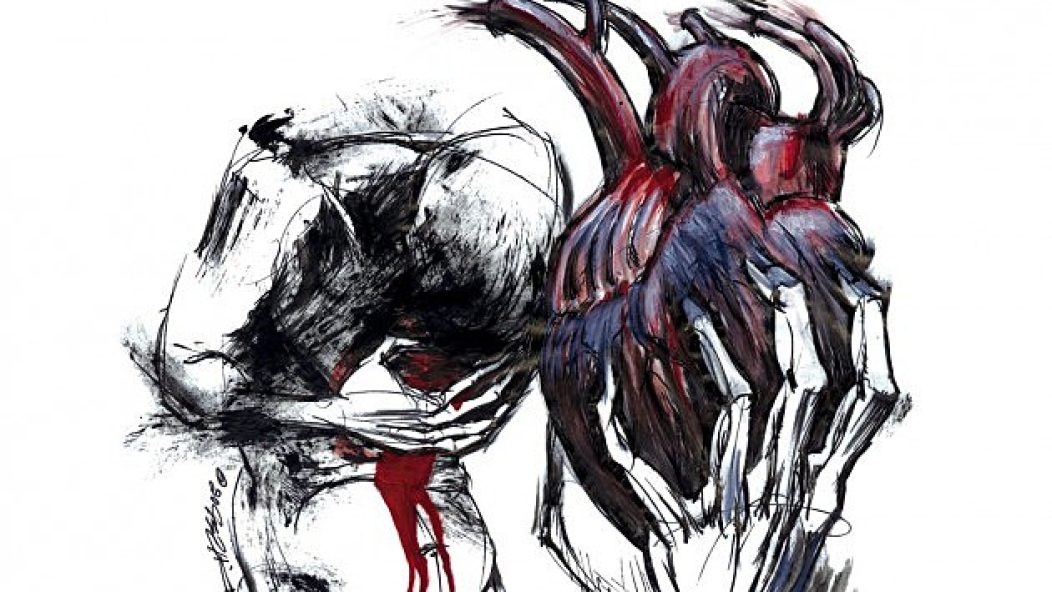
In Flames - Come Clarity Turns 10
…
Coming up as a ’90s metal kid was tough.
Our initial exposures to legendary bands were often lackluster. Rather than being served stone-cold classics like the privileged Gen-Xers that benefited from early Reaganomics, we were offered likes of Diatribes and Divine Intervention by the overpriced dealers adjacent to our local mall’s food court.
After scoring a copy of Roots or Swansong from those racks, our initial excitement was usually dashed by the older kids on the block: A cabal of ’80s-bred message board warriors waited, predatory, in the dial-up shadows, primed to bludgeon us with ONLY THE 80s ARE REAL elitism-ageism while belittling our late discoveries and/or new-school idols.
To a certain class of nerd, you were a permanent poseur.
Making matters worse, as the decade drew to a close, we had to weather nu metal, which everyone (said nerds especially) was convinced was going to burn TRUE HEAVY METAL to the ground in a pile of JNCOs, green dreadlocks, and seventh strings. Spoiler: metal is still thriving, and no one gives a shit about Limp Bizkit anymore.
The career arc of In Flames reflects the spirit of The Late ’90s Struggle, even if they were a few steps late at every turn. For a certain generation, they were our Metallica, putting together a run of four (or five, depending on who you ask) classic albums before turning bad and remaining ungood. They rose to prominence as one of the progenitors of a brand new style–the vaunted Gothenburg melodic death metal sound. As they achieved considerable commercial success in their creative twilight, they inadvertently exposed the impotence of nu metal’s perceived threat to “real” heavy metal.
After 2000’s Clayman–the band’s fifth album, and possibly the perfect blend of the Gothenburg sound and pure hard-rock anthems–In Flames’ output turned sour. But against the odds and conventional wisdom, they gave longtime fans a last-ditch parting gift in 2006’s Come Clarity, which turns ten today.
Ten years ago, the hesher contingent felt abandoned by In Flames’ creative direction. Clayman‘s followup, Reroute to Remain, truncated their trademarks, and dealt instead in staccato clunkery, weird washes of distortion and ill-advised warbling from singer Anders Friden. Their decision to don matching white uniforms in this era–conveniently hatched in conjunction with Slipknot’s rise–is often glossed over.
2004’s Soundtrack to Your Escape–a more drastic against-their-strengths departure–completely forsaked the lead guitar work that made people fall in love with In Flames in the first place and hedged its bets on a pair of terribly-titled ballads (“My Sweet Shadow” and “Evil in a Closet”) that left people cold.
Even after these letdowns, the announcement of Come Clarity carried a glimmer of hope, as the band had a habit of being heavy-handed–and even slightly defensive–when it came to album titles. The title Reroute to Remain, with its “Fourteen Songs of Conscious Insanity” subhead, was a essentially a disclaimer stamped on the jewel case: “We’re trying something new BECAUSE THIS IS THE RECORD WE HAVE TO MAKE RIGHT NOW AS A BAND, GUYS.” As such, a title like Come Clarity seemed like a soft mea culpa:
“We fucked up. Our bad. We’re coming home.”
Shockingly, they kinda did.
And it was just in time. Their prior stumbles alienated many, but diehards like myself still held out hope for a return to potency, even if a return to form was unlikely. When message board chatter hit a fever pitch, my college roommate and I hovered over our Gateways until SoulSeek rewarded us with two sweet, sweet leaks: “Dead End” and the title track. And they were good! “Dead End” weighed a goddamn ton, and was led by a powerful guest vocals by Swedish pop artist Lisa Miskovsky. It was a surprise, but a pleasant one, as was the title track, which nailed the power balladry that Soundtrack to Your Escape had whiffed on. We were stoked!
When we finally heard the first half of the album, however, that excitement waned. Forgettable groove-metal slogs like “Leeches” and the utterly vile “Scream” only bolstered their EuroKorn tag; this combination of nu-affectation and their last-in-line Derek Hess cover art made the band look hopelessly out of touch. The potential we found in those two leaked tracks seemed like a cruel tease.
But something happens in Come Clarity‘s second half. They dug deep and found some soul.
Sure, “Vacuum” sounded like a paler Dark Tranquillity (who were absolutely on fire ten years ago), and “Pacing Death’s Trail” was merely a callback to Whoracle, but dammit, they were playing to US again, not teenagers that were looking to graduate from Mushroomhead. “Versus Terminus” finally perfected the chugga-chugga thwomp that they couldn’t quite nail down on Reroute tracks like “Drifter” and “Trigger.” And “Crawl Through Knives” is one of the best In Flames songs on any album, driven by Anders’ absolutely scorching vocal delivery–and somehow not hindered in the slightest by a chorus callout that 1000% sounds like “…it’s in my ass!”
But the true gem of Come Clarity, the song that actually makes this damn record worth writing about ten years later, is “Vanishing Light.” Kicking the door down with a Stratovarius-esque lead line, it triggers the tiny demons that made my hair stand on end the first time “Embody the Invisible” ripped through the gates and broke all the rules. It’s In Flames doing their In FLames thing one more goddamn time, like a past-their-prime prizefighter swinging for the fences and scoring a late-round knockout, crushing bookies’ souls and forcing the crowd to their feet in the process.
In 2006, In Flames shouldn’t have had one more burner left in ’em, but they did. “Vanishing Light” is a blinding burst of fan service, three minutes that feel like thirty seconds, a final parting gift packed with mirth, madness and wistful memories.
“Vanishing Light” was the last stand. From that point on, aging fans and stubborn band went separate ways. In Flames didn’t return to asskickery; they just resorted to chasing paychecks while aimlessly stumbling, punchdrunk. We didn’t follow them into the abyss. We just watched them fade.
Looking back, though, the trajectories don’t really matter. If those condescending ’80s heshers taught us anything, it was that relationships never last. Both In Flames and their late ’90s cheerleaders might’ve grown out of heavy metal identity politics and bought houses and shit, but at least Come Clarity provided us with one last thrill before the final breakup.
It’s the best bad In Flames album.
…
…











